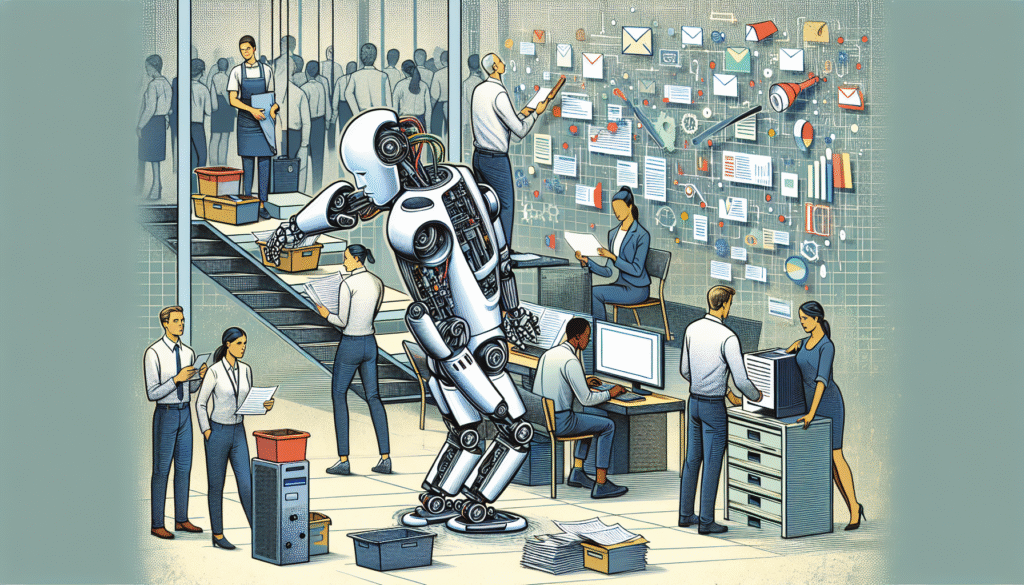
Robotics and Automation: Reshaping the Landscape of Work
The integration of robotics and automation technologies across diverse industries is revolutionizing the workforce, impacting job roles, required skills, and the very nature of work itself. This transformation presents both challenges and opportunities, demanding a proactive approach to adapt and thrive in the evolving landscape.
The Impact on Existing Jobs: Automation’s most immediate impact is felt in sectors involving repetitive, manual tasks. Manufacturing, logistics, and transportation are prime examples where robots and automated systems are increasingly taking over roles previously held by human workers. Warehouse automation, utilizing robots for picking, packing, and sorting, streamlines operations and reduces reliance on manual labor. Similarly, self-checkout kiosks in retail and automated teller machines in banking are visible manifestations of this shift, reducing the need for cashiers and tellers.
This displacement of human labor by machines raises concerns about job security, particularly for workers in roles easily automated. While some argue that automation inevitably leads to widespread job loss, others maintain that it primarily transforms job roles rather than eliminating them altogether.
The Emergence of New Roles: While automation disrupts some existing jobs, it simultaneously creates new roles and opportunities. These new roles often require higher-level skills, emphasizing critical thinking, problem-solving, and creativity. Robotics technicians, automation engineers, and data analysts are in increasing demand to design, maintain, and optimize automated systems. The rise of artificial intelligence (AI) further necessitates roles focused on algorithm development, machine learning, and AI ethics.
Furthermore, automation can free human workers from mundane tasks, allowing them to focus on more complex and engaging responsibilities. This can lead to increased job satisfaction and productivity, enhancing the overall quality of work. For example, in healthcare, robots are assisting with surgeries and patient care, allowing medical professionals to dedicate more time to diagnosis, treatment planning, and patient interaction.
The Skills Gap and the Need for Reskilling: The shift towards automation demands a corresponding shift in workforce skills. A growing skills gap is emerging, where the demand for specialized technical skills outpaces the available supply. This necessitates a focus on reskilling and upskilling initiatives to equip workers with the competencies needed for the jobs of the future. Educational institutions, governments, and businesses must collaborate to develop training programs that address the evolving needs of the workforce.
These programs should focus on areas such as programming, data analysis, robotics maintenance, and AI development. Furthermore, fostering adaptability and a lifelong learning mindset is crucial to navigating the dynamic nature of the future job market.
The Changing Nature of Work: Beyond specific job roles, automation is transforming the very nature of work itself. Remote work, enabled by digital technologies and automation, is becoming increasingly prevalent. This offers flexibility and work-life balance, but also presents challenges related to communication, collaboration, and maintaining a sense of community.
The gig economy, characterized by short-term contracts and freelance work, is also gaining traction. Automation can facilitate this trend by providing platforms and tools for managing and coordinating freelance work. This shift towards a more flexible and decentralized work model requires new approaches to labor regulations, social safety nets, and worker protections.
The Role of Education and Training: Preparing the future workforce for the age of automation requires a fundamental shift in educational priorities. STEM education (science, technology, engineering, and mathematics) needs greater emphasis at all levels, from primary school through higher education. Cultivating problem-solving skills, critical thinking, and creativity is essential to equip students for the complexities of the automated workplace.
Furthermore, vocational training and apprenticeships can provide practical experience and industry-specific skills, bridging the gap between education and employment. Collaboration between educational institutions and businesses is crucial to ensure that training programs align with the actual needs of the labor market.
The Ethical Considerations of Automation: The increasing reliance on automation raises important ethical considerations. Algorithmic bias in AI systems can perpetuate and exacerbate existing societal inequalities. Ensuring fairness, transparency, and accountability in the development and deployment of AI is critical.
Job displacement due to automation also raises ethical concerns about social responsibility and the need for safety nets to support affected workers. Discussions about universal basic income and other social welfare programs are gaining prominence as potential solutions to address the challenges posed by widespread automation.
The Future of Work: The future of work in the age of automation is characterized by continuous evolution and adaptation. Embracing lifelong learning, developing adaptable skills, and fostering a mindset of continuous improvement are crucial for navigating this dynamic landscape. Collaboration between governments, businesses, and educational institutions is essential to create a future of work that is inclusive, equitable, and beneficial for all.
The Impact on Productivity and Economic Growth: Automation has the potential to significantly enhance productivity and drive economic growth. By streamlining operations, reducing errors, and optimizing resource allocation, automated systems can lead to increased efficiency and output. This can contribute to lower costs, higher profits, and increased economic competitiveness. Furthermore, automation can create new markets and industries, driving innovation and fostering economic development.
The Human-Machine Partnership: The future of work is not about replacing humans with machines, but rather about creating a synergistic partnership between humans and machines. By automating routine tasks, machines can free up human workers to focus on tasks that require uniquely human skills, such as creativity, critical thinking, and emotional intelligence. This collaboration can lead to enhanced productivity, improved quality of work, and greater job satisfaction.















